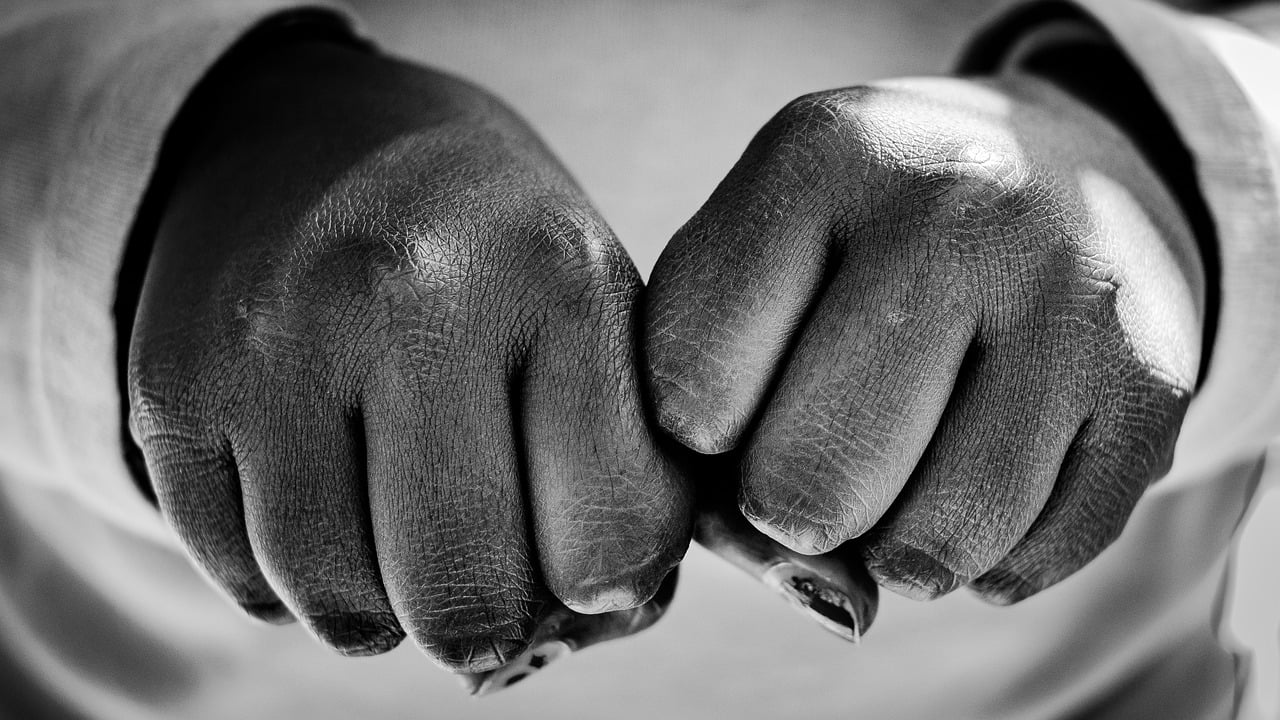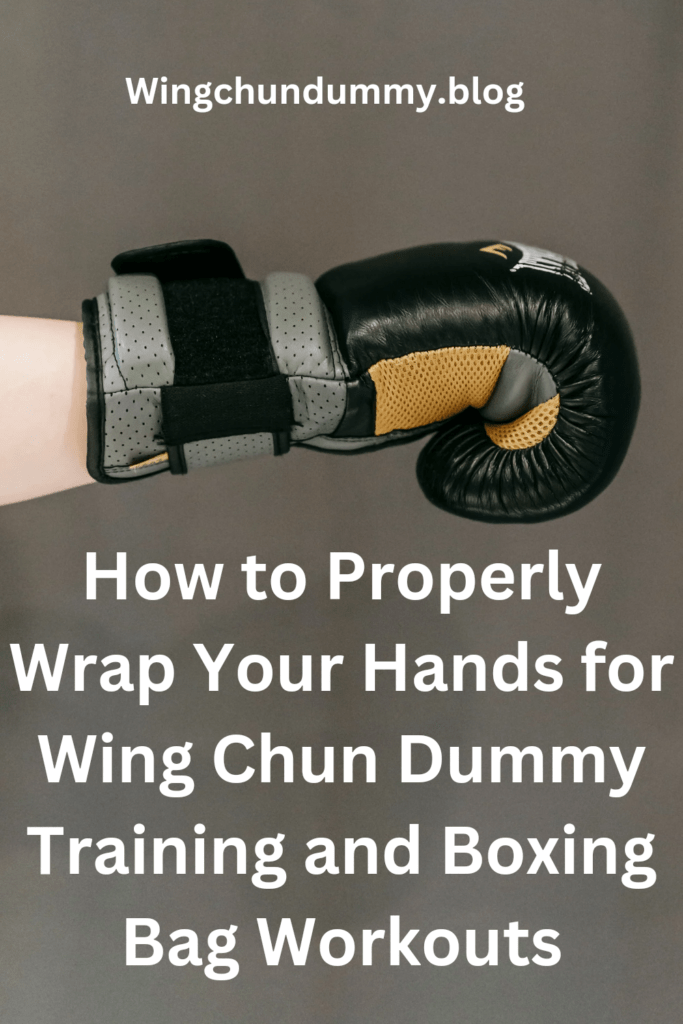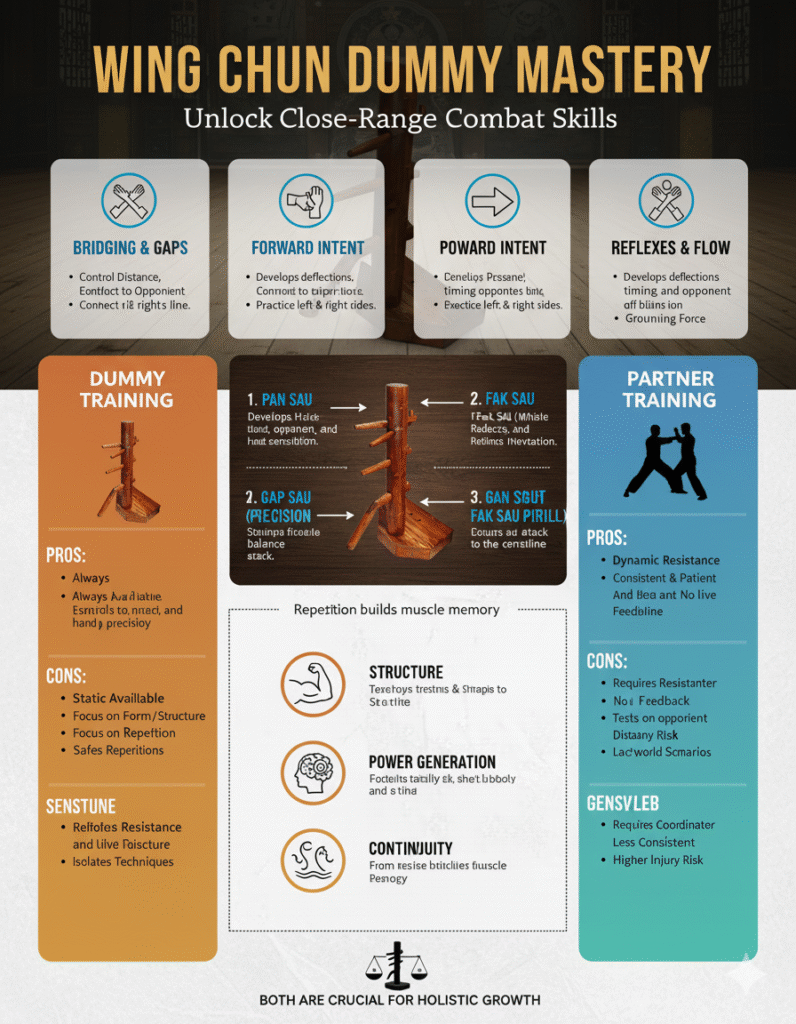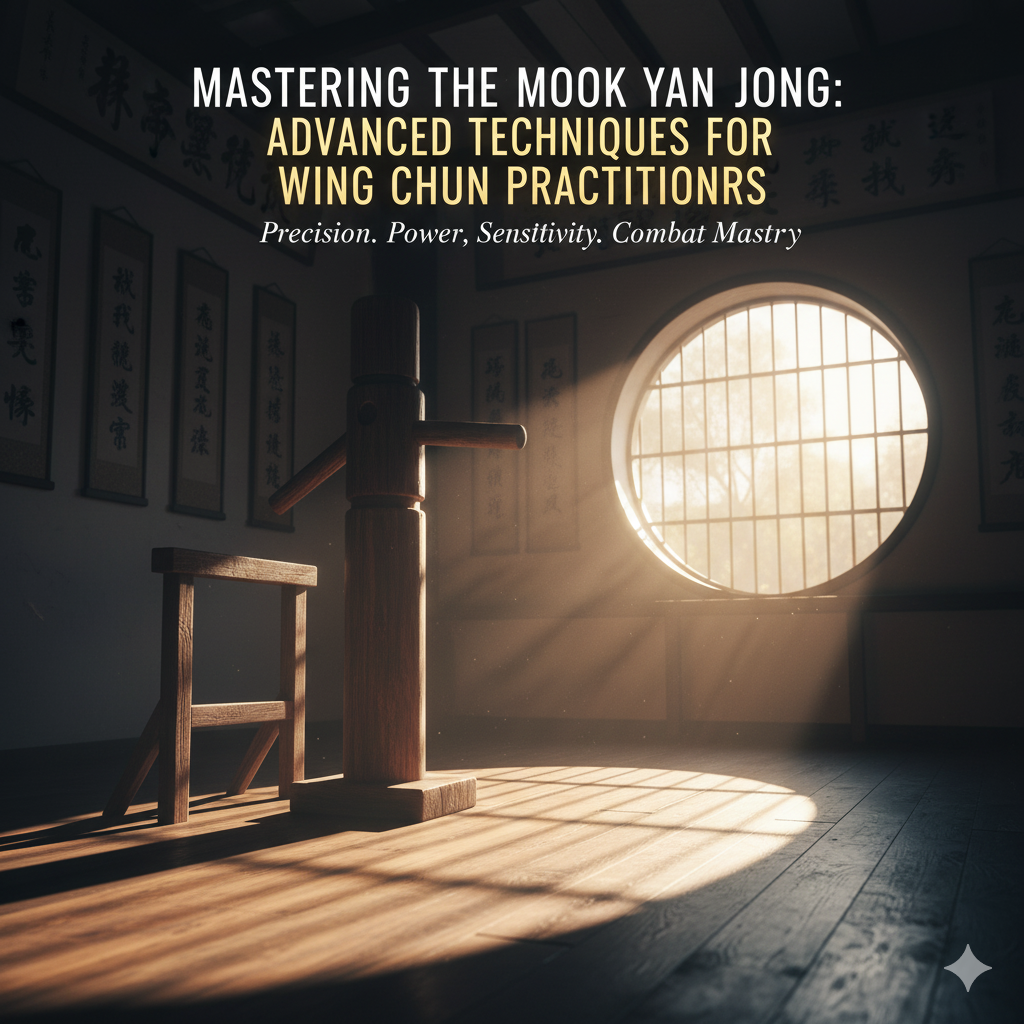hand ✋ wrapping techniques
Engaging in combat training, whether it be Wing Chun dummy practice or boxing bag workouts, necessitates a crucial preparatory step:
properly wrapping your hands.
This fundamental practice is essential to safeguarding the intricate structures of your hands, which include the wrists, knuckles, and fingers.
Neglecting this step can significantly increase the risk of various injuries, such as sprains, fractures, and bruises, which can derail your training progress and lead to long-term health issues.
Hand wrapping serves as a protective barrier, stabilizing the joints and distributing the impact forces more evenly across the hand and wrist.
This support is particularly vital during high-impact activities like punching a heavy bag or striking a Wing Chun wooden dummy.
where the hands absorb considerable force.
The wrap acts to maintain the alignment of the small bones in your hands and wrists.
reducing the likelihood of dislocation or strain.
Additionally, it provides a layer of cushioning that can prevent the skin from tearing and the knuckles from becoming excessively bruised.
Aside from injury prevention, proper hand wrapping enhances your ability to train effectively.
It contributes to a more secure and confident grip, allowing you to deliver strikes with greater precision and power.
This is particularly important in Wing Chun, where the accuracy of movements is paramount, and in boxing, where the intensity and frequency of strikes are high.
The increased support can also reduce fatigue, enabling longer and more productive training sessions without compromising the structural integrity of your hands.
Ultimately, the practice of hand wrapping is not just a precautionary measure but a fundamental aspect of combat training.
It underscores the importance of preparation and safety, ensuring that you can pursue your training goals with confidence and minimal risk.
Whether you are a novice or an experienced practitioner, investing time in learning and applying proper hand wrapping techniques will pay dividends in your overall training experience and longevity in the sport.
Materials Needed for Hand Wrapping
Proper hand wrapping is critical for both Wing Chun dummy training and boxing bag workouts to prevent injuries and ensure maximum protection.
The essential materials required for wrapping hands include a pair of hand wraps, gauze, and tape.
These materials work together to provide a secure and comfortable fit, allowing you to train efficiently and safely.
Hand wraps come in various lengths, typically 108 inches or 180 inches.
The 108-inch wraps are generally suitable for individuals with smaller hands or for those who prefer a lighter wrap.
The 180-inch wraps offer more material, providing more comprehensive coverage and support, especially beneficial for intense training sessions.
The length you choose will depend on your personal preference and the level of protection you desire.
Gauze is an optional material that can be used for additional padding.
It is particularly useful for individuals requiring extra cushioning around the knuckles or those recovering from minor injuries.
Applying gauze ensures that the wraps feel more comfortable and reduces the risk of irritation during prolonged training sessions.
Tape is another optional material that can be used for added security.
After the hand wraps are in place.
you can use athletic tape to secure the ends and prevent them from coming loose during training.

This added layer ensures that the wraps remain tight and do not shift, providing consistent support throughout your workout.
There are different types of hand wraps available.
each offering unique benefits.
Cotton wraps are the most common, providing a balance of comfort and durability.
Elastic wraps, also known as Mexican-style wraps, offer a more flexible and snug fit, allowing for better hand mobility.
Gel wraps contain a layer of gel padding for increased shock absorption.
making them ideal for individuals seeking extra protection.
For Wing Chun dummy training, cotton or elastic wraps are typically sufficient, given the controlled nature of the exercises.
For boxing bag workouts, where the impact is higher, gel wraps or additional gauze padding might be more beneficial.
By selecting the appropriate materials and understanding their specific uses.
You can ensure your hands are well-protected and ready for any training challenge.
Preparing Your Hands for Wrapping
Before commencing the hand wrapping process for Wing Chun dummy training or boxing bag workouts.
it is imperative to ensure that your hands are appropriately prepared.
Clean hands are essential to avoid any discomfort or slipping of the wraps during intense physical activity.
Begin by thoroughly washing your hands with soap and water 💦🌊.
ensuring all dirt and grime are removed.
Following this, dry your hands completely with a clean towel, as any residual moisture can cause the wraps to shift or become loose during training.
Next, it is crucial to remove any jewelry from your hands and wrists.
Rings, bracelets, and watches can not only damage the wraps but also pose a risk of injury to your hands during training.
Thus, ensuring your hands are free from any adornments is a necessary step in the preparation process.
Additionally, take the time to trim and file your nails.
Long or jagged nails can tear the wraps and potentially cause injury to yourself or others during practice.
Keeping your nails short and smooth helps maintain the integrity of the wraps and ensures a safer training session.
These preliminary steps are fundamental to ensuring that the hand wrapping process is effective.
And that the wraps remain secure throughout your Wing Chun dummy training or boxing bag workouts.
By following these guidelines, you can prevent discomfort, slippage, and potential injuries, allowing for a more focused and productive training experience.
Step-by-Step Guide to Wrapping Your Hands
Properly wrapping your hands is essential to protect your wrists, knuckles, and thumb during Wing Chun dummy training and boxing bag workouts.
Follow these steps to ensure a secure and effective wrap:
Step 1: Prepare Your Hand Wrap
Start by unrolling your hand wrap and ensuring that it is free of any twists.
Begin with the loop at the end of the wrap and place it around your thumb.
This will anchor the wrap and provide stability.
Step 2: Wrap the Wrist
Begin wrapping the wrist by circling the wrap around it three to four times.
This provides a solid foundation and protects the wrist from strain.
Ensure that the wrap is snug but not too tight, allowing for proper circulation.
Step 3: Secure the Thumb
After the wrist, bring the wrap over the back of your hand and loop it around your thumb.
This step is crucial for thumb support.
Wrap the thumb one to two times.
ensuring it is secure but not overly tight, which could restrict movement.
Step 4: Wrap the Knuckles

Move the wrap across the back of your hand and begin wrapping your knuckles.
Circle the wrap around the knuckles three to four times.
This step is vital for protecting the bones in your hand during impact.
Maintain even tension to avoid any loose or overly tight spots.
Step 5: Cross Back to the Wrist
From the knuckles, cross the wrap back to the wrist.
This crossing action helps keep the wrap in place and adds an extra layer of protection to your hand.
Continue wrapping around the wrist and hand, creating a crisscross pattern for added stability.
Step 6: Finish the Wrap
Complete the wrapping process by circling the wrap around the wrist a few more times.
Secure the end of the wrap with the Velcro or fastening mechanism.
Ensure the wrap 🌯 feels secure and provides ample support without being restrictive.
Maintaining even tension throughout the wrap is crucial.
Uneven tension can lead to discomfort and ineffective protection.
Take your time to practice these steps until you achieve a comfortable and secure hand wrap.
Proper wrapping minimizes the risk of injury and enhances performance during training sessions.
Common Mistakes and How to Avoid Them
When it comes to wrapping your hands for Wing Chun dummy training and boxing bag workouts.
several common mistakes can undermine both the effectiveness of the wrap and your overall safety.
Understanding these pitfalls and how to avoid them is crucial for achieving a secure and comfortable wrap each time.
One frequent mistake is wrapping the hands too tightly.
While it may seem like a tighter wrap provides better support.
it can actually restrict blood flow and cause discomfort.
This issue can be avoided by ensuring that the wrap is snug but not overly tight.
A good rule of thumb is to check if you can still move your fingers freely after wrapping.
Another common error is neglecting to cover the thumb.
Many people focus solely on the wrist and knuckles, leaving the thumb exposed and unsupported.
This can lead to thumb injuries, especially during intense training sessions.
To avoid this, make sure the wrap encompasses the thumb, providing it with adequate support.
Leaving gaps in the wrap is also a widespread problem.
These gaps can lead to insufficient support and increase the risk of injuries.
To prevent this, ensure that the wrap is evenly distributed across your hand, with no loose areas.
Pay particular attention to the spaces between the fingers and the area around the wrist, ensuring they are properly covered.
Additionally, some people make the mistake of using old or worn-out wraps.
Over time, wraps can lose their elasticity and become less effective.
To avoid this, regularly inspect your hand wraps and replace them as needed to maintain proper support.
By being mindful of these common mistakes and following the practical advice provided.
you can ensure that your hands are well-protected and comfortable during your Wing Chun dummy training and boxing bag workouts.
Proper hand wrapping is essential for both performance and injury prevention.
Making it a crucial aspect of your training routine.
Adapting Your Wrap for Different Training Types
Hand wrapping techniques are not universal.
They need to be adjusted based on the specific demands of different training types.
When it comes to Wing Chun dummy training and boxing bag workouts.
The variations in hand wrapping can significantly impact your performance and safety.
For Wing Chun dummy practice, flexibility and dexterity are paramount.
This type of training focuses on precision, speed, and fluidity of movements.
Therefore, your hand wraps should allow for maximum range of motion.
Start by using a wrap that is thinner and more elastic.
This will provide the necessary support while maintaining flexibility.
Pay particular attention to wrapping your wrists and thumbs.
As they are heavily involved in the intricate movements of Wing Chun.
Ensure your fingers are free to move, allowing for the accurate execution of techniques.
On the other hand, boxing bag workouts require a different approach.
The primary concern here is the impact on your knuckles and the stability of your wrist.
A more padded wrap is essential to absorb the repetitive force exerted during heavy bag sessions.
Begin by using a thicker, more cushioned wrap.
Focus on creating a solid barrier around your knuckles by layering the wrap multiple times over the knuckle area.
This additional padding will help to distribute the impact forces more evenly, reducing the risk of injury.
Additionally, ensure that your wrists are tightly secured to prevent any unwanted movement that could lead to sprains or strains.
In summary, adapting your hand wraps to the specific requirements of Wing Chun dummy training and boxing bag workouts is crucial.
For Wing Chun, prioritize flexibility and support, while for boxing,
emphasize padding and wrist stability.
These adjustments will not only enhance your training experience but also protect you from potential injuries.
Caring for Your Hand Wraps
Proper maintenance and care of your hand wraps are crucial to ensure their longevity and effectiveness during Wing Chun dummy training and boxing bag workouts.
Neglecting to care for your hand wraps can result in reduced support and protection, potentially leading to injuries.
Therefore, it’s essential to follow a few key practices to keep your hand wraps in optimal condition.
First and foremost, cleaning your hand wraps regularly is necessary to prevent the buildup of sweat, bacteria, and odor.
After each training session, rinse your hand wraps in cold water to remove sweat and dirt.
For a more thorough cleaning, machine wash them on a gentle cycle using a mild detergent.
It is advisable to place the hand wraps in a mesh laundry bag to prevent them from tangling with other items.
Avoid using bleach or fabric softeners as these can degrade the fabric.
Drying your hand wraps properly is equally important.
Air drying is recommended, as using a dryer can cause shrinkage and damage the elasticity of the material.
Lay the hand wraps flat on a clean surface or hang them up to dry in a well-ventilated area.
Ensure they are completely dry before storing them to avoid the growth of mold or mildew.
Storing your hand wraps correctly can also extend their lifespan.
Roll them up neatly after each use to prevent tangling and potential damage.
Store them in a dry, cool place away from direct sunlight, as prolonged exposure to sunlight can weaken the fabric.
Regularly inspect your hand wraps for signs of wear and tear.
Check ✔️ for fraying edges, holes, or loss of elasticity.
If you notice any significant damage, it is time to replace them.
Generally, with regular use, hand wraps should be replaced every 4-6 months.
However, this can vary based on the frequency and intensity of your training sessions.
By following these simple care instructions, you can ensure that your hand wraps remain effective.
providingo the necessary support and protection during your Wing Chun dummy training and boxing bag workouts.

Conclusion and Final Tips
Proper hand wrapping is crucial for both Wing Chun dummy training and boxing bag workouts.
as it significantly reduces the risk of injuries and enhances overall performance.
Throughout this blog post, we have detailed the step-by-step process of hand wrapping, emphasizing the importance of each stage.
This knowledge ensures that your hands are adequately protected and supported.
allowing you to train with confidence and focus.
Remember, the key to effective hand wrapping lies in consistency and practice.
Regularly practicing your wrapping technique will make it second nature.
Ensuring you can quickly and securely wrap your hands before each training session.
Pay close attention to the tension of the wrap, 🌯 making sure it is neither too tight nor too loose.
Proper tension is essential for maintaining circulation and providing adequate support to your wrists and knuckles.
It is also vital to seek feedback from experienced trainers or training partners.
They can offer valuable insights and corrections that can further improve your technique.
Do not hesitate to ask for advice if you are unsure about any aspect of the hand wrapping process.
Investing time in mastering this skill will pay off in the long run by safeguarding your hands and enhancing your training experience.
Ultimately, prioritizing hand safety should be a fundamental aspect of all your combat training activities.
Whether you are engaging in Wing Chun dummy training or hitting the boxing bag.
ensuring that your hands are well-protected will allow you to train more effectively and with greater longevity.
By taking the time to properly wrap your hands, you are not only preventing injuries.
but also setting yourself up for success in your martial arts journey.
Stay diligent and make hand wrapping an integral part of your training routine.
Your hands are your most valuable tools in combat sports, and taking the necessary steps to protect them is an investment in your future performance and well-being.



